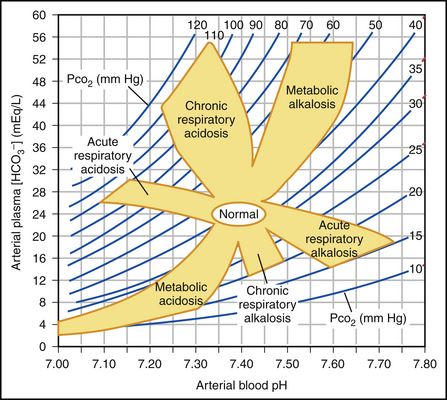18 CASE 18
A 40-year-old male comes to his primary care physician complaining of blurred vision and a headache.
PHYSICAL EXAMINATION
PE: The patient is anxious and complains of an inability to concentrate because of the headaches. He does not remember urinating during the past day and is unable to provide a urine sample for analysis. A presystolic murmur (fourth heart sound) is evident. Funduscopic examination shows swelling of the optic nerve in both eyes (papilledema).
PATHOPHYSIOLOGY OF KEY SYMPTOMS
Malignant hypertension causes target organ damage, particularly to the kidney. The patient is likely in renal failure, indicated by the elevation in blood urea nitrogen and creatinine, the lack of urine production, and the metabolic acidosis. Metabolic acidosis is characterized by an acidic pH, a decrease in plasma HCO3− levels, and a compensatory decrease in PCO2. The kidneys normally excrete slightly acidic urine, and, consequently, impaired renal function usually leads to a metabolic acidosis (Fig. 18-1).
< div class='tao-gold-member'>
Only gold members can continue reading. Log In or Register to continue
Stay updated, free articles. Join our Telegram channel

Full access? Get Clinical Tree



